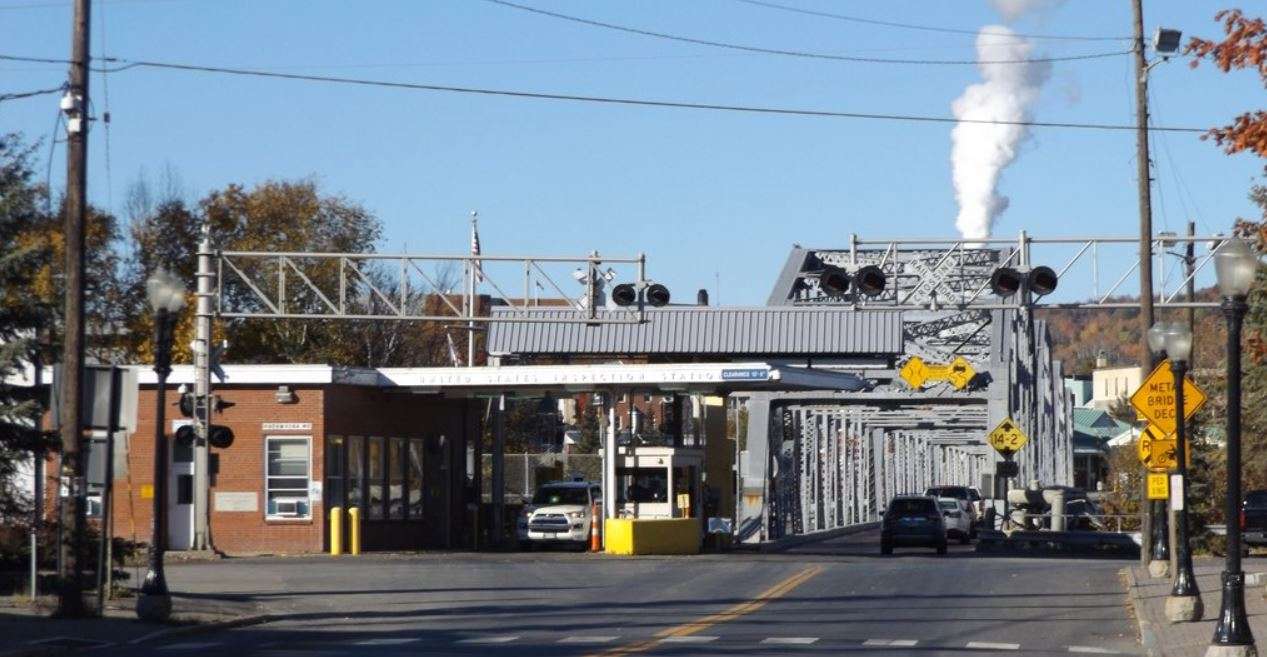
Maine traffic from Canada plummets during pandemic
 Courtesy / MDOT
The Madawaska-Edmundston International Bridge, which is a century old and due to be replaced, carries personal and commercial traffic between Maine and Canada.
Courtesy / MDOT
The Madawaska-Edmundston International Bridge, which is a century old and due to be replaced, carries personal and commercial traffic between Maine and Canada.
The usually steady stream of travelers from Canada into Maine dried to a dribble during the first month of the pandemic, new data show, and the decrease might have economic consequences for the state.
The number of people coming to Maine by car at 11 international land ports of entry fell 42% from February to March, according to the most recent records from the federal Bureau of Transportation Statistics. The March total of 114,667 was just half the number of visitors in March 2019.
COVID-19 was declared a pandemic by the World Health Organization on March 11, and Maine recorded its first case of the disease the next day.
On March 21, the U.S. and Canada mutually halted nonessential travel between the countries in an effort to slow the spread of the novel coronavirus. President Donald Trump and Canada's prime minister, Justin Trudeau, last month renewed the restrictions, which are set to expire May 21. Trudeau has hinted that his country will continue the clamp-down; Trump has been mum and previously expressed eagerness to open the border.
While most commercial traffic and returning citizens are exempt from the restrictions, it’s clear the pandemic is still having a significant effect along the western, northern and eastern edges of Maine.
The traffic slowdown was quantified May 8, a BTS spokesman told Mainebiz. Every port of entry, from Jackman to Van Buren to Eastport, saw marked declines.
At the three border crossings in Calais, the most frequently traveled port, 37,038 people entered in March, down from 65,505 during February. In Limestone, the least frequented port, there were 831 visitors in March, after previously receiving 1,366.

Fewer travelers could be troubling for such communities. Towns and cities on each side of the 611-mile Maine-Canada border — part of the longest undefended international boundary in the world — share mutual economies and more.
Madawaska-based Twin Rivers Paper Co. employs 1,400 people, including some at its lumber facility just across the Saint John River in Edmundston, New Brunswick. Employees travel between the two facilities on an aging 900-foot bridge, which is scheduled to be replaced in 2022. Officials for the $74 million project note that there’s a “strong degree of community cohesion” on both sides of the river.
Extended families often straddle the border, hold dual citizenships, and shuttle between home towns like Woodstock, New Brunswick, and Houlton, or Clair, New Brunswick, and Fort Kent. Many Canadian drivers fuel up in Maine, where gas is typically about 20% cheaper.

A total of 830,000 Canadian travelers spent over $290 million in Maine during 2017, according to the Canadian Trade Commissioner Service. The BTS data show that in the busiest month for crossings last year, August, a total of over 426,000 people traveled by car from Canada to Maine.
Also in that month, nearly 4,000 bus passengers crossed the border. In March, the number was 54.
But there’s some good news for Maine: Commercial traffic from Canada appears to be relatively unaffected by the pandemic. The three ports of entry with the greatest volumes of trucks — Houlton, Jackman and Calais — all saw modest increases in those numbers during March, compared to a year ago. In Houlton, where entries are usually the highest, 7,786 trucks crossed the border in March, a 14% increase over February.
Rail freight also appeared to be steady in March, compared to previous months. In Jackman, however, the number of inbound rail containers was 1,249, the lowest total in two years and a 37% decline from March 2019.










0 Comments